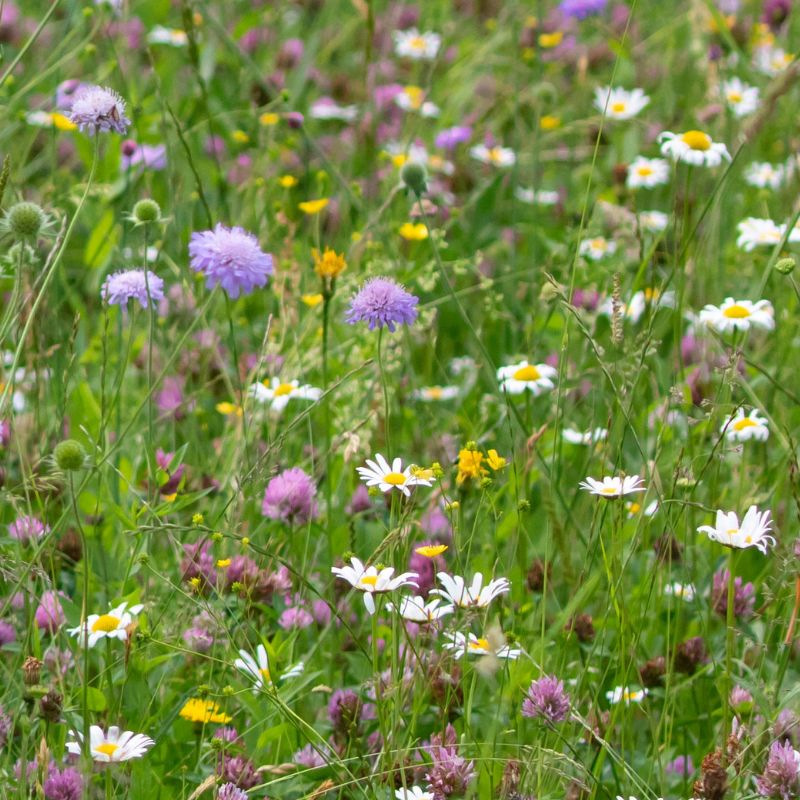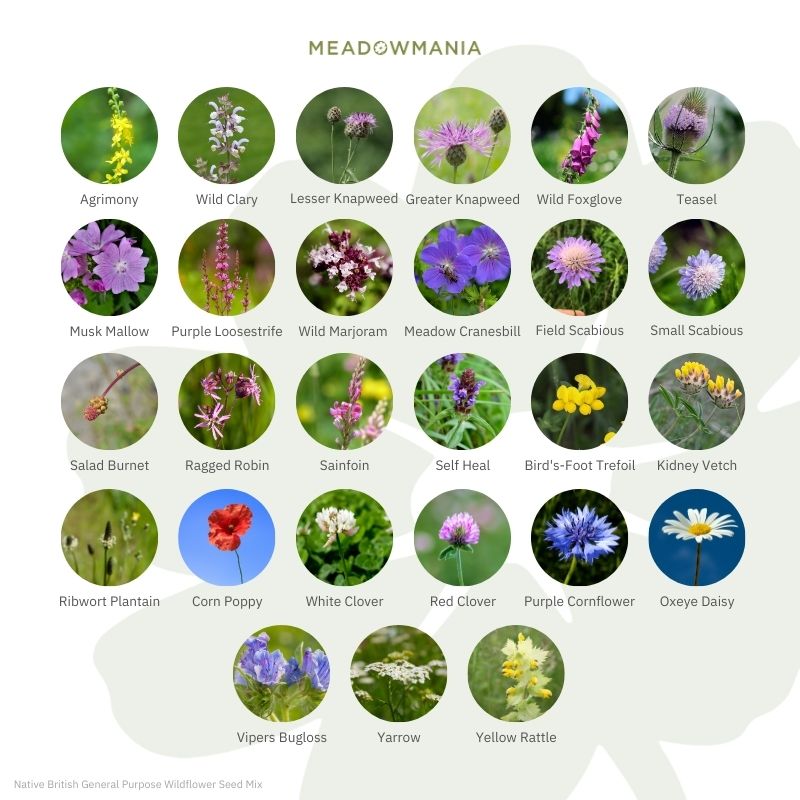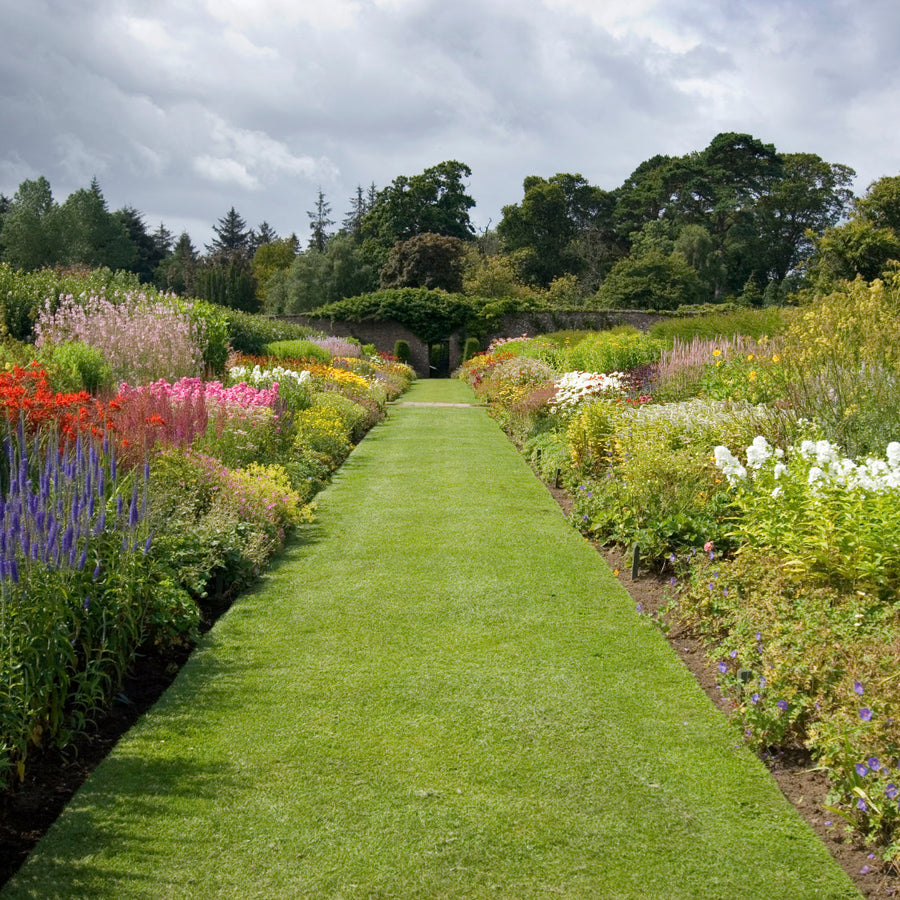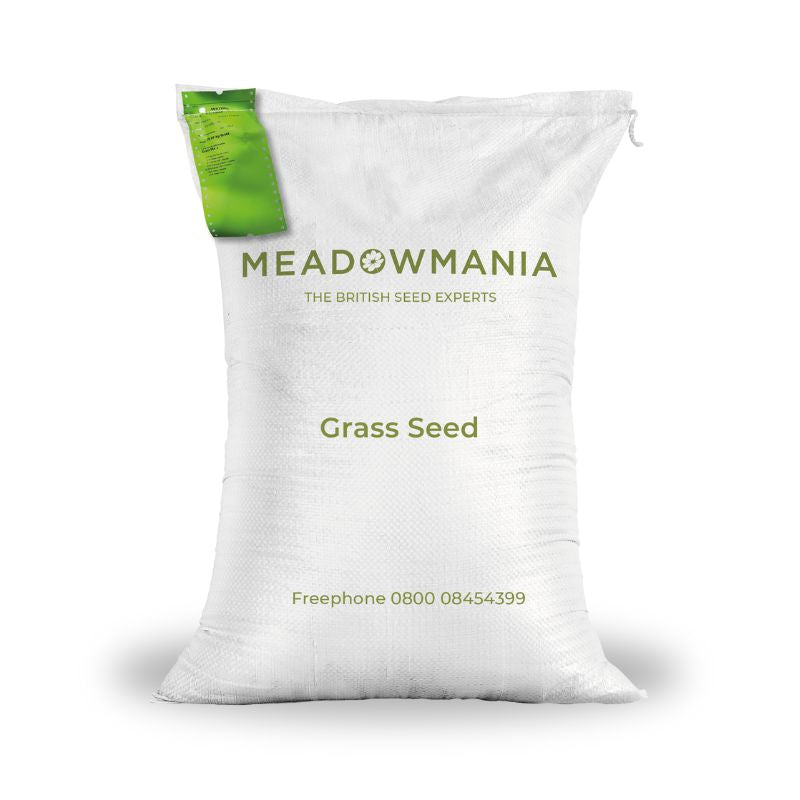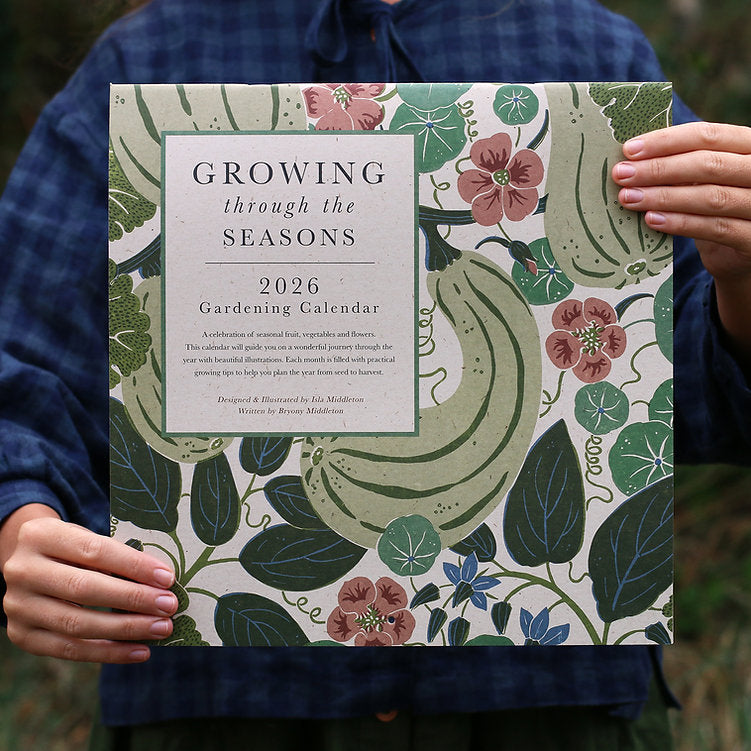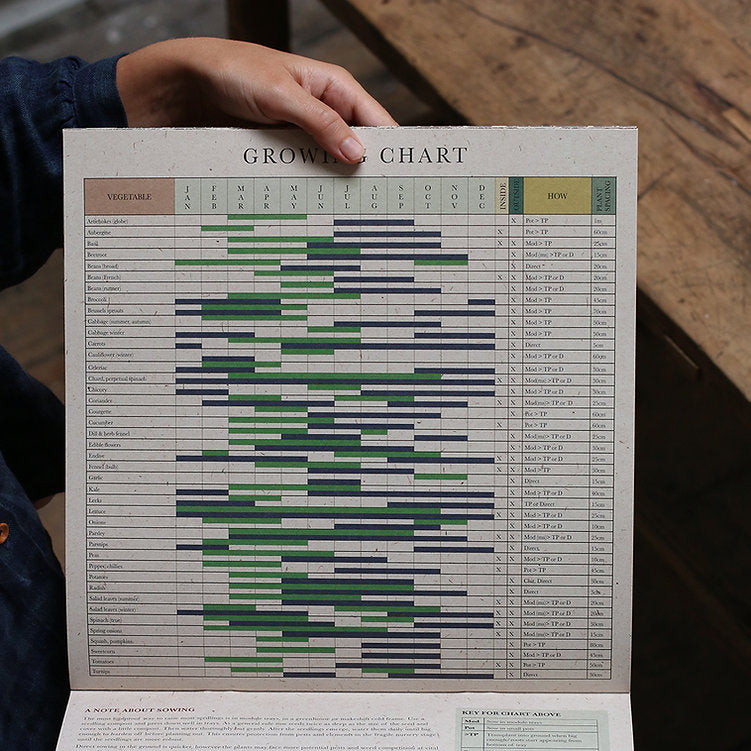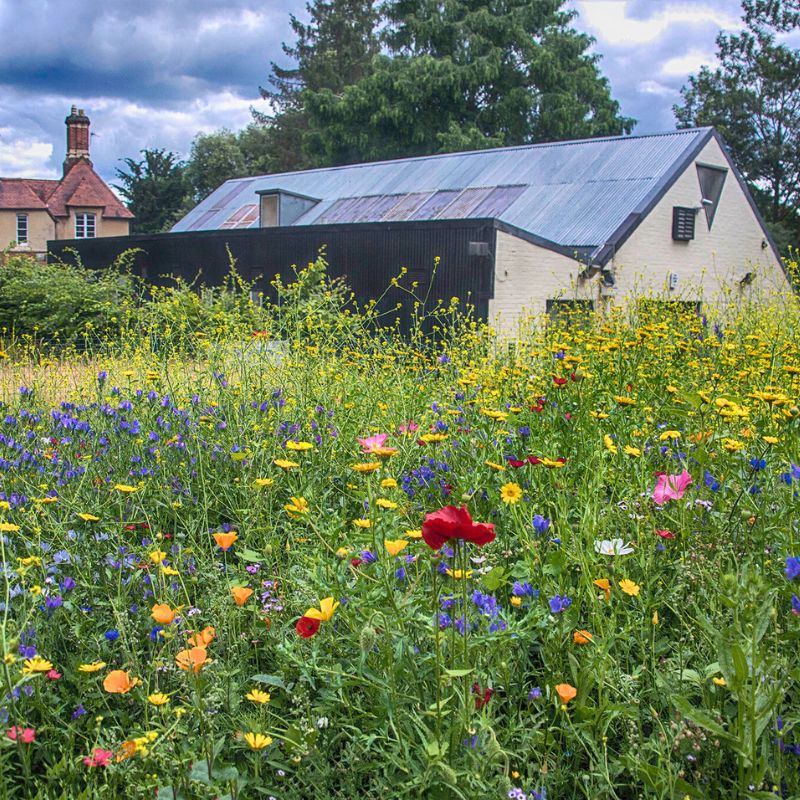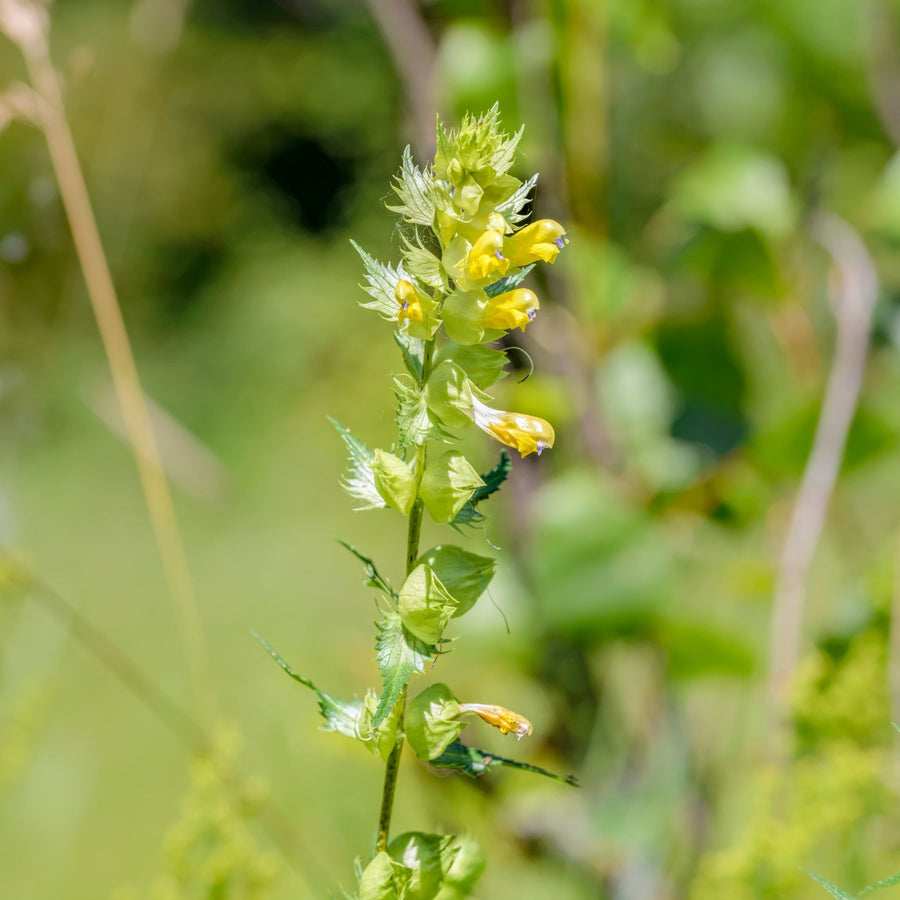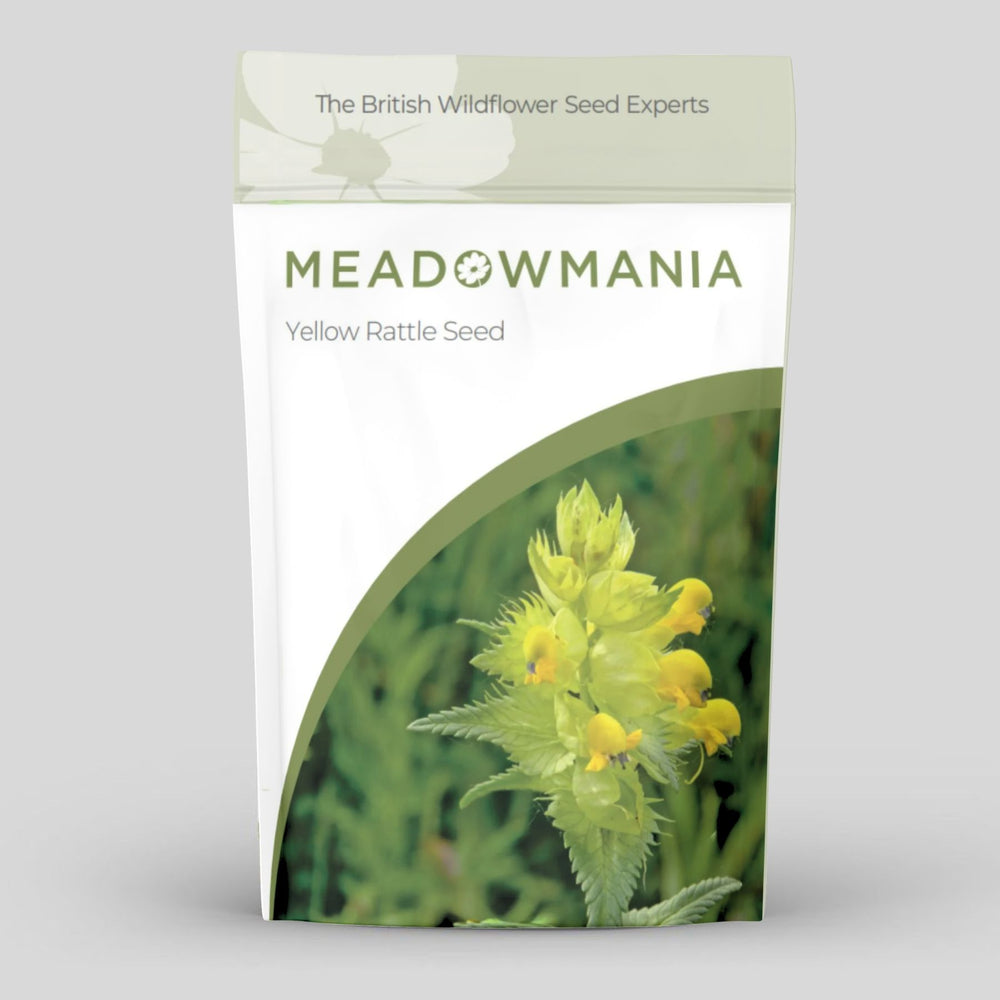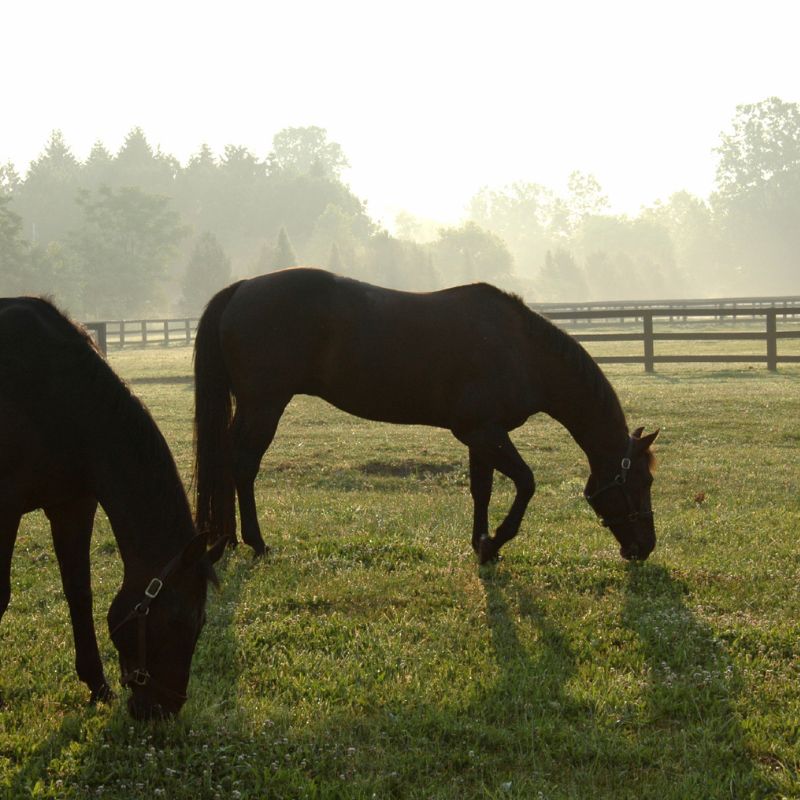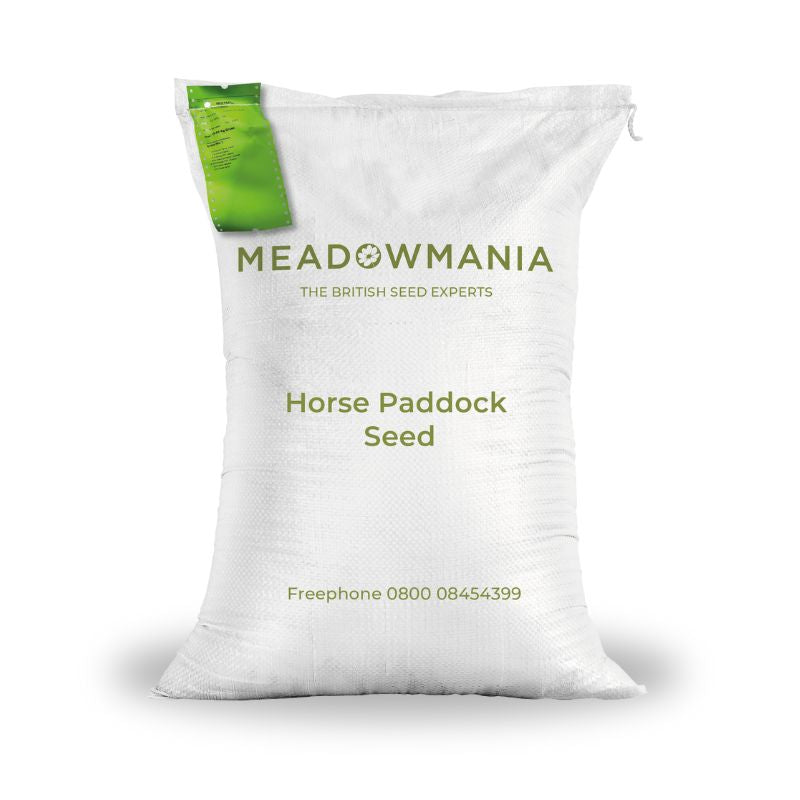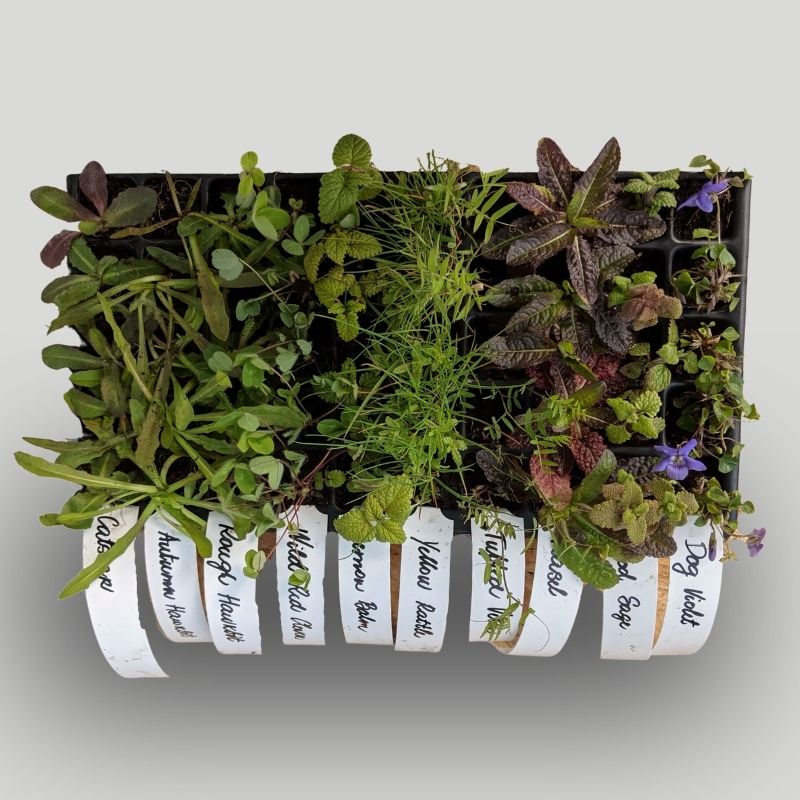
The 3 P’s Of Establishing Wild Flowers Successfully
Planning
It may be possible to buy a packet of wild flower seed simply spread it on some grass and see the wild flowers flourish. In most cases though this approach will fail. There are different types of wild flowers and different sources. It is not the case that one is right and the other is wrong. The following will hopefully give you some ideas as to the different approaches.
There are two main types of wild flowers: annuals and perennials.
Annuals are generally very colourful, such as Poppies, Cornflower and Corn Marigold, but they will flower only once and can be difficult to get to re-grow in following years.
Perennials take longer to get established but will come back year after year after they have flowered.
It may be possible sow a combination of both annuals and perennials and get the best of both worlds.
Grass or No Grass
The next thing you have to decide is whether you want to sow wild flowers on their own or with grass. Wildflower perennials look best when they grow and flower with grass as a backdrop. If there is no grass then the wild flowers can look like a large patch of weeds when not in flower. On a small area, sowing just wild flowers can create an attractive wild flower border. On larger areas, sowing grass with the wild flower perennials will give a more natural look.
Wildflowers generally struggle to compete and get established. Some thought therefore should be given to where you’re going to plant them and the level of competition that is there at present. For the best chance of success you need to be able to remove as much of the competition as possible. Therefore you may need to factor in time to be able to do that before sowing new seed.
Native or Non-Native?
We sell a range of wildflowers best described as native. This means the wildflowers have been grown and produced in the UK and is has been found naturally in the UK without human intervention.
We also sell a range of wildflower mixtures based on the species from around the world. These create diverse meadows and often have waves of bright colours.
Planning summary for establishing wild flowers successfully:
- Decide how long you want the wild flowers to last.
- Decide where in the garden you are going to put the wild flowers and how much competition is there.
- Decide where you’re going to source the product from and how important the type of wild flower species are to you.
Preparation

All three of the P’s could have stood for preparation. As previously mentioned, wildflowers do not like to much competition to start with. It is often suggested that perennial wild flowers will do best on poor soils. This is not because they will not grow in more fertile conditions, but that certain less desirable species such as docks tend to flourish in fertile conditions.
Sowing time
Mid-March through to mid-May, and mid-August through to mid-October. If sowing Cornfield Annuals in the spring, ideally they should be sown by mid-April. They take 10 to 12 weeks as a minimum from sowing to flowering.
One key to success in sowing in the spring is that seed will need warm conditions and moisture before starting to grow. It is important to consider soil temperature which takes some time to warm up. The best soil temperature for seeds to start germinating is 7-10°C which is usually reached by mid to late March across the UK. Soil temperature is not the same as the general temperature.
Ground Preparation
You need to prepare the ground so that you have a good, even, level seed bed before sowing. The more competition you have got rid of, the better your chances of success. If you have the time, you should leave the ground fallow for a while before planting. This will encourage the large existing seed bank to germinate. You can then kill off or remove that before planting the seed.
Wildflower seed is generally very small and does not want to be planted too deep. Ideally, broadcast the seed on top and roll afterwards. If you cannot roll the ground simply walk all over it, the aim is to push the seed into the ground rather than bury it.
Seed rates
- Cornfield annual mixes at 2 grams per square metre
- 100% wild flower seed mixes at 1.5 grams per square metre
- Grass & wildflower seed mixes (a.k.a. meadow mixes) at 4 grams per square metre
After Sowing
Our advice generally is not to water. Let nature take its course. Clearly if it does not rain for weeks after sowing then you may want to consider it. But in those conditions it takes lot of water before there is enough water at the very top of the soil to germinate the seed. The key thing to remember with preparation is that once the wild flowers have been sown, there is very little you can do to remedy anything. If you are looking to sow a long term meadow, then wait until you have the preparation right before sowing rather than rushing to sow the seed.
Preparation Summary for establishing wild flowers successfully:
- Clear the ground of competition and create a good seed bed.
- If possible, leave time to encourage the existing seed bank to germinate then kill that off as well.
- Choose the appropriate seed rate, do not over-sow.
- Wait until the ground conditions are warm enough.
- Broadcast the seed on top and roll.
- After sowing, wait for it to rain.
Patience
Gardening is one of those frustrating occupations where you can do everything right and it can still go wrong. However, patience is an important part of establishing wild flowers successfully. If sowing a Cornfield annual mix, then you are going to find out fairly quickly if it is working or not. Sow in April and by the end of June you may know if it has worked. A perennial wild flower meadow is a longer-term investment. Many of the perennial species are slow to establish and may not start to appear until the second or third year. Some species such as ox eye daisy and wild carrot are tall and can dominate early on in the meadow's life.
The key point would be with a young wildflower meadow, as Corporal Jones of Dad’s Army might say: "Don’t panic!". It may be that it has all gone completely wrong and you need to start again. But do not rush to rip it up! Time will naturally change the balance of the meadow. You can also change it by when you mow or cut it down. Mowing it earlier, say in July, may sacrifice some of the flowering season but it may suppress some species that you may not want. There will be times when meadows fail and need to be restarted, but do not rush to do this - give it some time. The risk is that you start again and end back where you are now in a few years' time! If you need any more information or advice then please feel free to contact us at shop@meadowmania.co.uk


